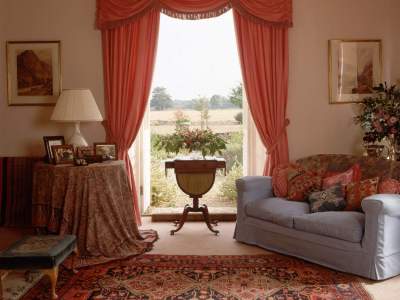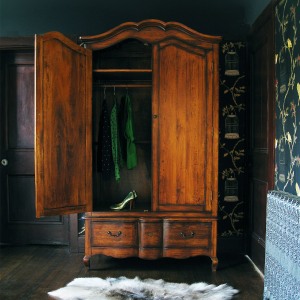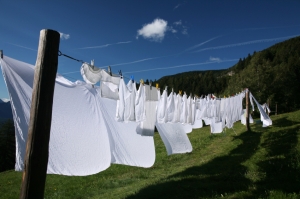 Most living rooms get pampered with an assortment of perfumed products from furniture polish to air fresheners, dusting powders for the carpets and upholstery cleaners. These products aren’t aroma coordinated and, more importantly, they all contain harmful chemicals. They are not the best option because all of their functions can be taken over by natural products which have been enhanced with essential oils.
Most living rooms get pampered with an assortment of perfumed products from furniture polish to air fresheners, dusting powders for the carpets and upholstery cleaners. These products aren’t aroma coordinated and, more importantly, they all contain harmful chemicals. They are not the best option because all of their functions can be taken over by natural products which have been enhanced with essential oils.
In years gone by people put aromatic grasses under their rugs and mats so the aroma would be released to freshen the room as they walked on them. Today most of us have wall-to-wall carpeting and we need something else. A carpet freshener powder, which can be used in exactly the same way as the commercial products, can be made by using essential oils in conjunction with kaolin, baking soda, or borax powder.
For each tablespoon of one of these base powders, you will need 1 drop of your chosen essential oil –use one of the less expensive ones. Simply add the essential oil to the powder in a blender and mix well. How much you make depends entirely upon your requirements. Once made, store in a sealed jar or sealable plastic bag. Leave it overnight in a drawer or closet before using for the first time; then sprinkle it on your carpet, leave for a few minutes, and vacuum up.
To stop the odor that builds up from the dust and dirt in the vacuum cleaner, you can put a teaspoon of carpet cleaning powder in the bag, which will fragrance the air as it is sucked through the machine. A more effective method, however, is to add 6-8 drops of essential oil to a cotton ball and popping it in the bag. Replace it with a new fragrance, if you wish, each time you change the bag, or empty it out depending on your machine.
 An even simpler method is to place the drops of essential oil directly on the bag by the air outlet, but this isn’t a good option for non-replaceable bags since you might want to change the fragrance later. Try the essential oils of Lemon, Orange, Lavender, or Pine to eradicate that dustiness which makes vacuuming the sort of job you need to bathe after!
An even simpler method is to place the drops of essential oil directly on the bag by the air outlet, but this isn’t a good option for non-replaceable bags since you might want to change the fragrance later. Try the essential oils of Lemon, Orange, Lavender, or Pine to eradicate that dustiness which makes vacuuming the sort of job you need to bathe after!
It is difficult to get windows absolutely sparkling –there always seems to be at least a few streaks left behind. To get rid of these, prepare a sheet of newspaper to act as a rag, put a drop of Lime, Grapefruit or Lemon oil on it and polish the window again. The essential oil soaks into the newspaper and combines with the print to give a sparkling finish which also releases a fresh and subtle fragrance when light shines through the glass.
The fruit of the lemon has long been used to polish copper, and essential oil of lemon works equally well. Simply put 1 drop on a soft cloth and buff the copper for a clean, gleaming polish.
 The living room is the place to prove to yourself that you can do without all those commercial sprays. Use a plant mister spray with water and essential oils to freshen up the furniture, curtains and carpets. As this is where your family and friends spend most of their time, you will want to choose a nice relaxing essential oil formula.
The living room is the place to prove to yourself that you can do without all those commercial sprays. Use a plant mister spray with water and essential oils to freshen up the furniture, curtains and carpets. As this is where your family and friends spend most of their time, you will want to choose a nice relaxing essential oil formula.
Use the spray, diffuser, light bulb, radiator, or humidifier method or add the oils to potpourri (don’t buy synthetic potpourri revivers.) Make your own blend of oils or use this tried and tested formula.
The Relaxing Living Room Blend
8 drops Geranium
3 drops Clary Sage
5 drops Lemon
3 drops Bergamot
Mix in these proportions
And if you want something to rouse your family out of their Sunday afternoon lethargy, try this:
The Stimulating Living Room Blend
8 drops Grapefruit
4 drops Lavender
4 drops Lime
2 drops Basil
Mix in these proportions
This article was adapted from:
The Complete Book of Essential Oils and Aromatherapy by Valerie Ann Worwood
All Images from Google.com

 Bed linens can be washed and stored with essential oils, see the
Bed linens can be washed and stored with essential oils, see the 

















